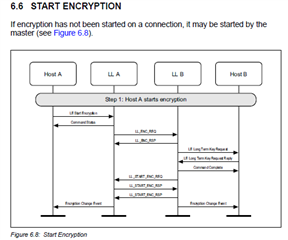Hello,
I am using secure dfu with bonds (SDKv15.3, Segger, nrF52832), it works fine however after each dfu (application only) I lose the bond information.
I have search about it and found that there are several variables that can affect to it, I think I checked all of them but the problem still remains:
1-I use nRF Toolbox from Android phone and I enabled the "keep bonds" option on the settings. Can you btw tell me what is doing exactly this option and how is this setting is transfered to the secure dfu code to remove or not the bonds?
2-The sdk_config.h on the secure download has NRF_DFU_APP_DATA_AREA_SIZE set to 12288 (I think is correct to match FDS 3*4*1024)
3-FDS on the application side (based on heart rate example) has FDS_VIRTUAL_PAGES = 3, FDS_VIRTUAL_PAGE_SIZE = 1024, where I think stores the bonds.
According to comment on sdk_config.h it is same size as 12288:
// <i> The total amount of flash memory that is used by FDS amounts to @ref FDS_VIRTUAL_PAGES * @ref FDS_VIRTUAL_PAGE_SIZE * 4 bytes.
To me knowledge all seems to be fine, but .... why I after dfu the phone and board cannot connect?
To bypass the problem I remove bonds on the board and phone and connect them after each dfu, then everything seems to work fine... till the next dfu.
Thanks,
Carlos




